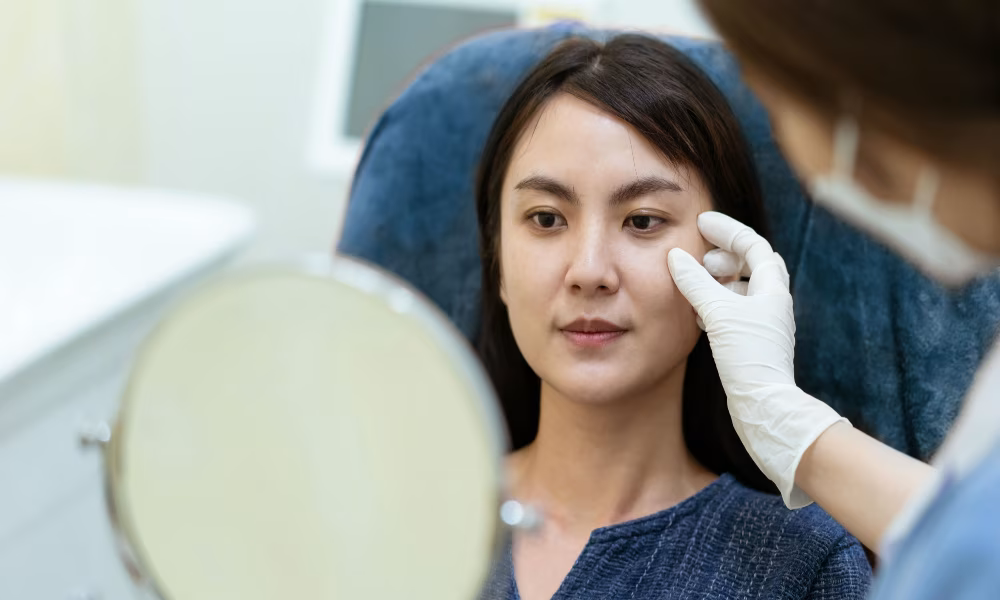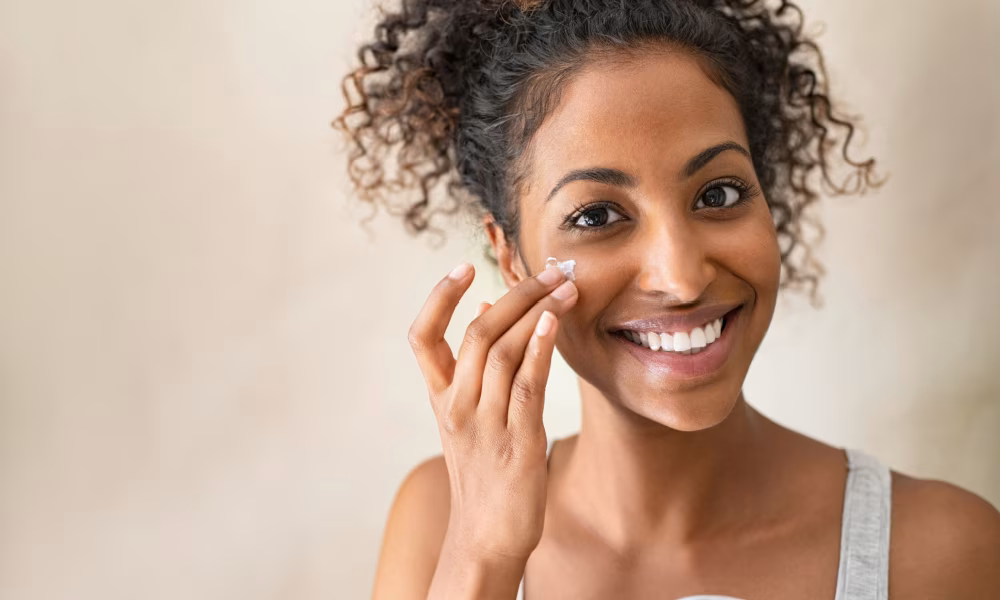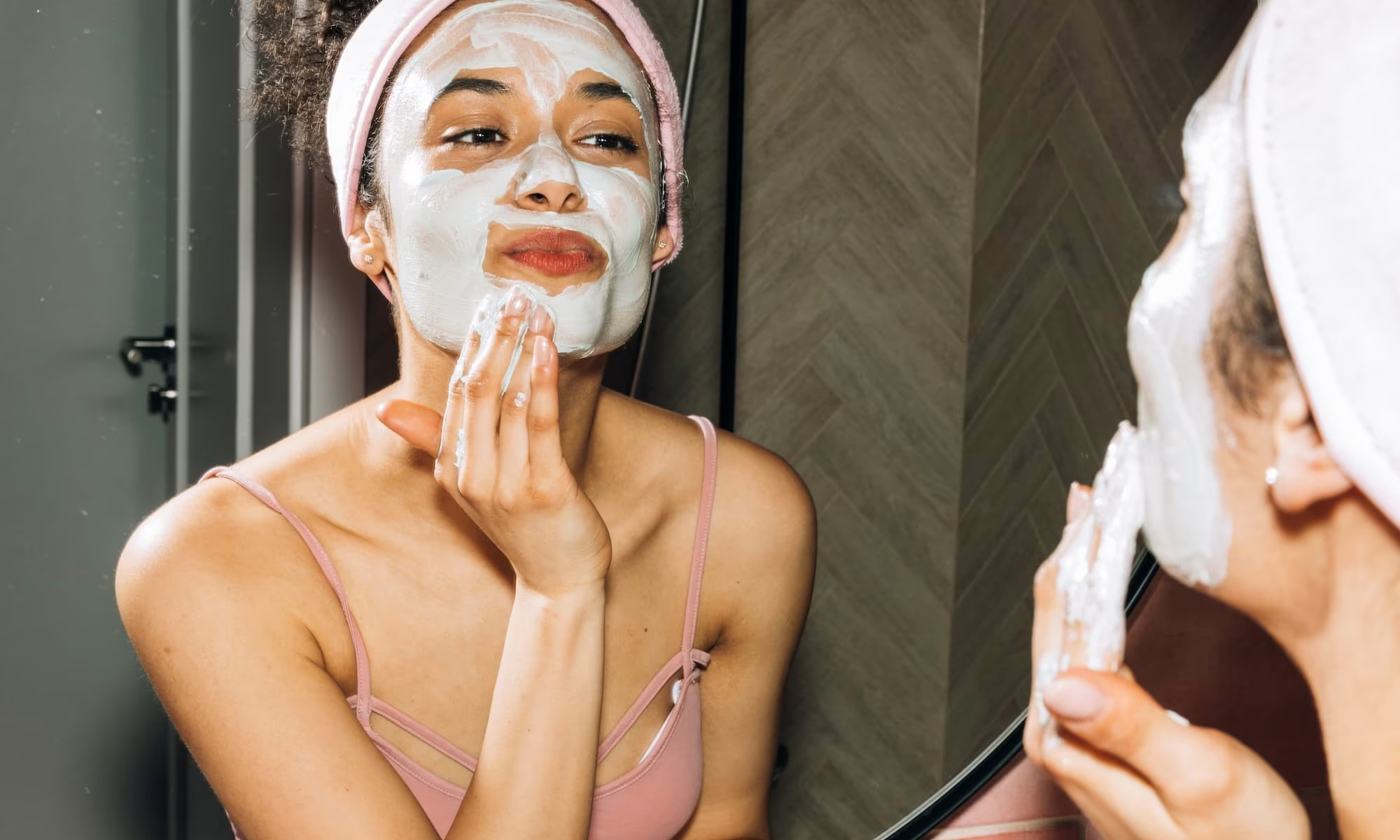Ask Your Doctor: A series where we turn to our brand expert and dermatologist, Dr. Tiffany Libby to answer your most asked questions about skincare – the do’s, the don’ts, and all her skincare tips and tricks. Dr. Tiffany Libby is a Board Certified Dermatologist and Moh Surgeon and Director of Mohs Surgery at Brown Dermatology.
1. What are the best eye creams for dark circles and wrinkles – AM/PM?
Because the under-eye and eyelid skin is amongst the thinnest on the body and the numerous blood vessels around the eyes, this undereye area is a common place where we start to see dark circles. The best eye creams to treat dark circles are ones that contain caffeine to help constrict blood vessels and lessen the appearance of dark circles, niacinamide and vitamin C to brighten skin, and peptides that support collagen production to counteract further thinning of skin.
Wrinkles tend to be more noticeable around the eyes as well because of the thin skin, and it’s an area of constant expression, which contributes to lines and creases forming in our skin. Hydrating skin and using peptides to stimulate collagen production is important to minimize the appearance of fine lines and wrinkles.
In the AM, I’d recommend a brightening eye cream with antioxidants like vitamin C and SPF, and in the PM, an eye cream that focuses on moisturization and peptides, like Reserveage’s Illuminating Eye Cream, to support healthy collagen production.
2. Would you recommend PRP or filler?
It depends on the patient, specifically the patient’s anatomy and cosmetic issue at hand. The perfect candidate for filler injection of the under-eyes is one who has visible hollowing, excellent skin tone, and minimal to no undereye “bags” or protruding fat pads. Platelet-rich plasma, or PRP is derived from your own blood which is drawn at the visit, and centrifuged or spun out to collect just the yellow platelet and growth factor-rich serum. It has been shown to modestly improve the appearance of dark circles and fine lines of the under eyes, however, does not offer consistent results, and requires multiple treatments.
3. What are the best eye creams for sensitive skin?
The best eye creams for sensitive skin are ones that focus on hydration, soothing skin and supporting the skin’s moisture barrier. Eyes, because of how thin the skin is, tend to be more vulnerable to sensitivities and irritation, and therefore need hydrating and moisturizing factors to support the skin barrier. Soothing ingredients with humectants like glycerin and hyaluronic acid help hydrate the delicate eyelid skin and minimize the appearance of fine lines.
4. What ingredients should you look for in eye creams?
My big four (and not all four need to be in the same eye cream) are: sunscreen (to protect the thin skin around the eyes as 90% of photoaging like fine lines and wrinkles are due to the sun’s UV rays), antioxidants (like vitamin C to brighten skin and support collagen production), peptides (to drive more collagen and elastin production and minimize appearance of fine lines and wrinkles), and retinoids (to increase cell turnover and support collagen).
5. What causes dark circles under your eyes?
There are several factors that contribute to dark circles forming under the eyes, which include the thin skin around the eyes, the increased blood vessels around the eyes which are more visible through the thin skin, and the changing fat pads and hollowing of the bony orbit. All of these factors that occur with aging and are impacted by genetics contribute to the formation of dark circles.
6. Is there a right and wrong way to apply eye cream?
The best way to apply eye cream is to split a pearl-sized amount to place on your 4th fingers and to lightly tap small dots around your eyes starting from the innermost corner. Pat the product onto the skin gradually working your way towards the outer corners and if your product can be applied on the upper eyelid, repeat the same application process there.







